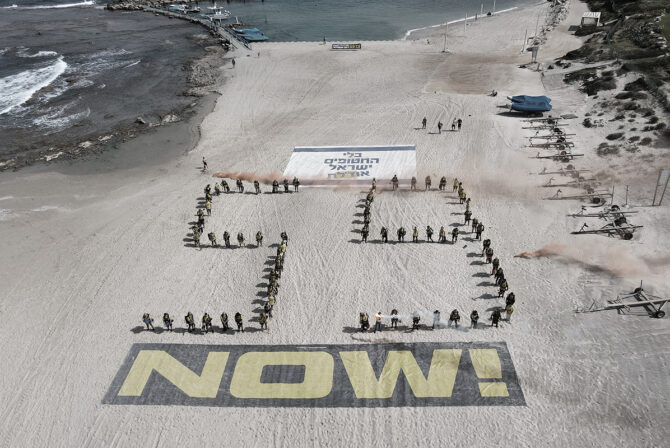This morning started with a blast. Actually, many blasts. Our shofar has emerged.
Today is Rosh Chodesh Elul, the first day of the Hebrew month preceding Rosh Hashanah. There is a minhag (custom) of blowing the shofar every morning during Elul except for Shabbat and the day before the New Year. Though this traditionally takes place at synagogue after Shaharit (morning services), my spouse and I have a practice of blowing the shofar at home. We’ve been doing it for over a decade, having bought a shofar for our first wedding anniversary, but it takes longer than it used to. Instead of one person waking up the neighbors, now all four of us blow the shofar each day, my two kids eager and impatient for their turns.
We keep the shofar on our mantel until the High Holidays are over. When we have guests, they have a uniform reaction upon seeing the long spirals: “Isn’t that type of shofar harder to blow?” They are surprised when we tell them that not only is it easier to get sound from a long shofar than a short one, but even our kids can produce a recognizable “tekiyah.”
Blowing the shofar is a full-body experience. We consider the way we are standing, how we position our arms, which way the horn is facing. Our breathing matters, our lips, teeth, tongue.
It engages all the senses, even smell (though not always pleasantly). In a world where many of us spend hours sitting still in front of a screen, it is refreshing to start the day with such a physical action.
But the shofar engages my mind just as much as my body. I learned years ago that the shofar was a way for us to apologize for our community’s sin at the time of the Golden Calf. Quick recap: We leave Egypt, we get to Mount Sinai, and Moses goes up the mountain to get the tablets. On the 40th day we freak out about his continued absence and insist on a replacement. We end up with a golden statue of a calf and start singing and dancing to celebrate. Both God and Moses are furious, Moses breaks the tablets, and we’re in the doghouse. Eventually God invites Moses back up the mountain to bring us a second set of tablets.
The shofar is made of a horn but may not be fashioned from the horns of a cow or bull, which would be too similar to the calf that got us in trouble. Deliberately using the horns of a different animal shows that we have changed and will not repeat our error.
I don’t always feel like I’ve moved past my own mistakes. As much as I try to be patient, to speak kindly, to give people the benefit of the doubt, I still fail regularly. An ongoing effort to use gentle discipline with my kids lapsed recently with my scream of, “WHAT do you think you’re doing?!?!? WHY are you throwing ROCKS at our CAR???” Through tears, my preschooler replied in a whisper, “I didn’t know I wasn’t supposed to.”
Parenting is often a lonely endeavor. In the language of the golden calf story, it can be hard to remember that God is still looking out for me and that Moses is coming down the mountain. I make mistakes when I let my fear overtake me.
This summer I learned a midrash (interpretation of Torah) that describes God’s presence being raised up every time the shofar was blown. In other words, the shofar reminded us that we were not alone, even while Moses was up the mountain. It kept us from the panic that led to the error of the golden calf.
This gave me a new perspective. Rather than declaring that I will start each New Year with a clean slate–something I can’t always do in confidence–I can consider the shofar a daily reminder of God’s presence in my life. My sense of stability is strengthened with a morning affirmation that I have community and support and strength.
And loud noises. That’s my children’s favorite part.
Like this post? Get the best of Kveller delivered straight to your inbox.








